What is Screen Printing
Screen Printing: A Deep Dive
Screen printing is a technique where ink is pushed through a mesh stencil onto T-shirts or other substrates, creating vibrant, long-lasting designs with high detail.
Start Designing
Get a Quote
Screen printing is a technique where ink is pushed through a mesh stencil onto T-shirts or other substrates, creating vibrant, long-lasting designs with high detail.
Screen printing is a printing technique where ink is pushed through a stencil, or mesh screen, onto a surface, creating a design. This process is widely used for printing on fabric, paper, and other materials. The stencil blocks out certain areas, allowing ink to pass through only the desired sections. Each color in the design requires a separate screen, which is carefully aligned to produce multi-colored prints. The ink used in screen printing is thick and vibrant, ensuring a bold and long-lasting finish. Originally developed for artistic and commercial applications, screen printing has become a cornerstone of the printing industry. The method allows for high-quality prints with excellent durability, making it ideal for creating professional and custom designs. It remains to be the best printing method when it comes to retail quality printing.
Screen printing is popular due to its versatility, durability, and cost-effectiveness. One of its biggest advantages is its ability to produce vibrant, long-lasting prints that do not fade easily, even after multiple washes. This makes it a favorite choice for T-shirts, promotional products, and branding materials. Additionally, screen printing works well on a variety of surfaces, including fabric, wood, metal, and plastic, allowing businesses and artists to create diverse products. The technique also allows for mass production, making it an efficient option for printing bulk orders at a relatively low cost. While digital printing has gained popularity, screen printing remains a preferred method for its ability to produce thick, high-quality prints with rich color saturation. Companies, sports teams, and organizations often choose screen printing for custom apparel and merchandise because of its affordability and professional look. As a result, it remains a staple in the printing industry despite advancements in digital printing technologies.
The short answer is that despite a lot of new apparel printing methods, there is no match for its quality, durability, and cost savings in bulk.
Screen printing is an ideal choice when precision, durability, and customization are essential. It allows for consistency across large orders, ensuring each print looks identical, which is crucial for branding and promotional efforts. The process accommodates specialty inks, including metallic, glow-in-the-dark, and textured finishes, providing a unique touch to designs. Unlike some digital printing methods, screen printing maintains its quality on both light and dark fabrics, making it a versatile option for apparel production. It also offers a handcrafted aesthetic that appeals to those seeking an artisanal or vintage feel in their designs. Furthermore, screen printing provides superior coverage on materials, resulting in more vibrant and opaque prints compared to other methods. Whether for corporate branding, creative projects, or retail merchandise, screen printing delivers reliability and artistic flexibility that make it a preferred choice for many industries.
The screen printing process starts with essential materials, including a screen printing frame, a stencil, screen printing ink, a squeegee, the garment, a light source, and a screen printing press.
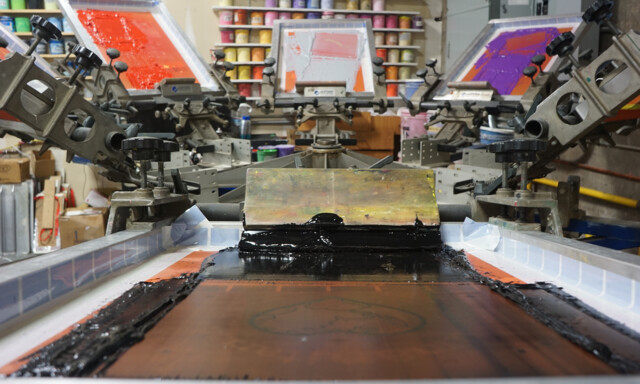
A design is create using design software like Photoshop, Illustrator, or Canva, and printed onto a clear transparency film.

The screen is coated with photo emulsion, dried, then exposed to light with the design. The covered areas block light, and the unexposed emulsion is washed away, revealing the stencil.

The prepared screen is placed on top of the printing press, ensuring it is properly aligned for accurate printing.
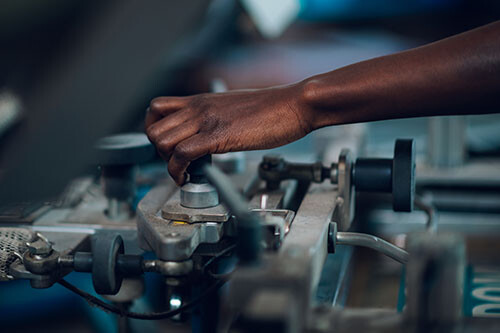
A generous amount of ink is placed at the top of the screen where a squeegee will be used to evenly pull the ink down across the design, transfering the ink through the screen and onto the shirt.
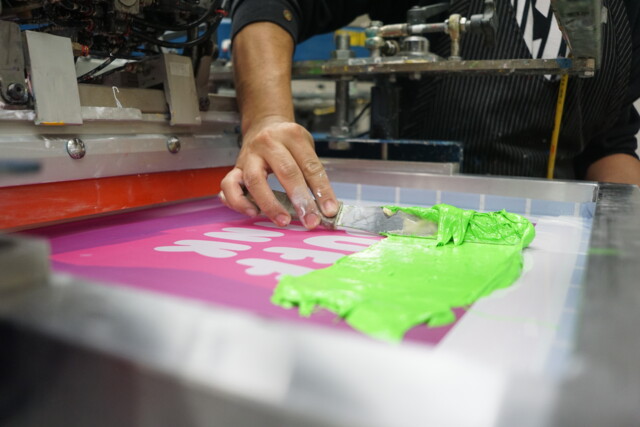
The shirt is loaded onto a flat on a surface on the press called a platen, ready for production.
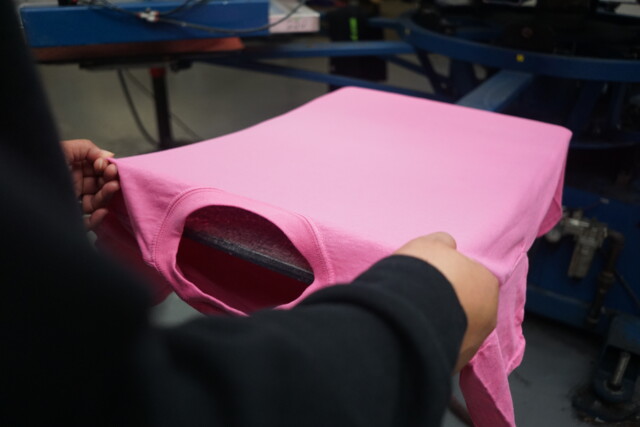
To ensure the design remains durable through multiple washes, the ink is heat set using a heat press, an iron (with a protective cloth), or a conveyor dryer.
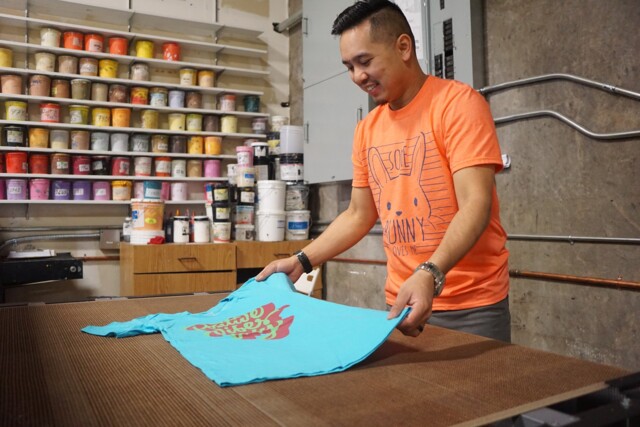
Once the ink is cured, the custom screen-printed shirt is ready to be worn and enjoyed, providing a high-quality, long-lasting design.
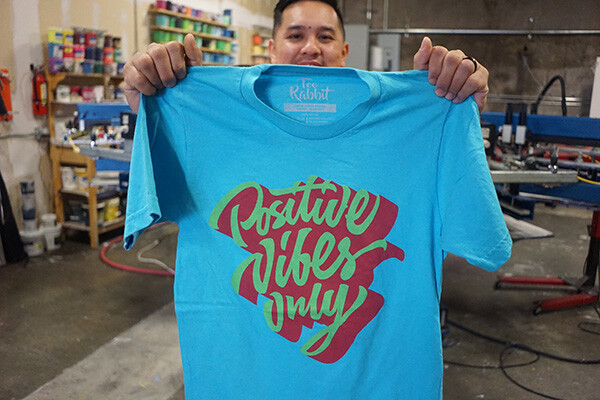
Select a garment, upload your design, and get started.
Screen printing is a technique where ink is pushed through a mesh stencil onto a surface, creating a durable and vibrant design.
Screen-printed designs are highly durable and can last for years, especially if properly cured and cared for. It is best to wash screen printed garments inside out to avoid premature fading.
Common materials include fabric (T-shirts, hoodies), paper, wood, metal, glass, and plastic. Though at Tee Rabbit we only specialize in scren printing on apaprel.
Each color requires a separate screen, so designs with multiple colors can be more time-consuming and costly. We can print a maximum of 10 colors, which include 1 color for the white under base layer.
Screen printing is better for bulk orders and durability, while digital printing is great for small orders with detailed designs.
Screen printing is most cost-effective for larger orders due to setup costs, but small runs are possible. Our minimum for screen printing is 36. Anything less can be done but we do charge much more per unit plus a $99 sample fee. Single unit samples start at $100 and are $50 extra per color.
Wash inside out in cold water, avoid harsh detergents, and air dry or use a low-heat setting to prolong the print’s lifespan.
Yes, but an underbase layer (usually white) is needed to make colors pop on dark fabrics.
Production time varies depending on the order size, but most jobs have a turnaround time of 10 business days. Orders over 5,000 may need additional time depending on production schedule.
Water-based inks and sustainable materials make screen printing more environmentally friendly, but traditional plastisol inks require chemical cleanup. We take the proper care to dispose of chemicals as we are an eco-conscious company.


